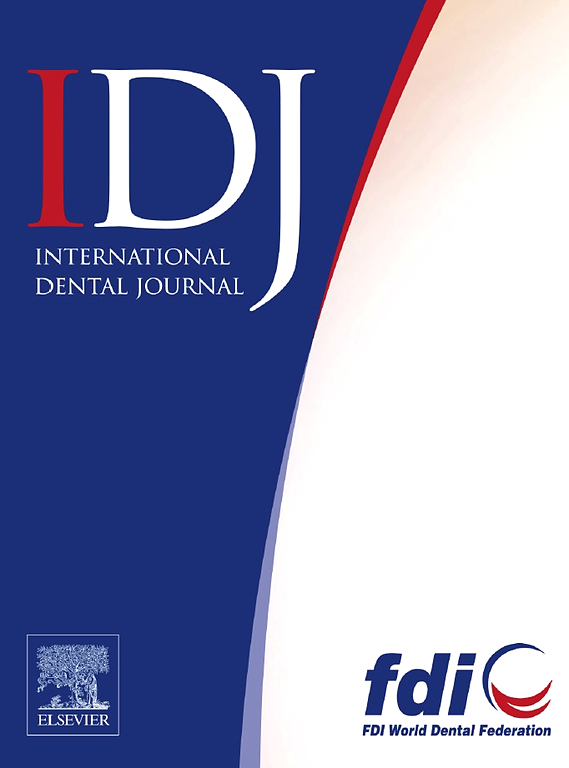Tooth Loss Leads to Cognitive Impairment and Mitochondrial Disturbance in Wistar Rats
IF 3.2
3区 医学
Q1 DENTISTRY, ORAL SURGERY & MEDICINE
引用次数: 0
Abstract
Background
The link between tooth loss and cognitive impairment has become increasingly significant. Recent findings suggest that mitochondrial alteration in hippocampal neurons may mediate this relationship.
Objective
This study aimed to explore the mediating role of mitochondria in the relationship between tooth loss and cognitive function in Wistar rats.
Method
Male Wistar rats (n = 20, 12 weeks old) were randomly divided into tooth extraction (TE) and sham groups. The model was established through upper molar extraction and sham operation respectively. Cognitive evaluations were performed using Morris water maze (MWM) test 8 weeks after the model establishment. Hippocampal neuron morphology was observed. Mitochondrial function was evaluated by ATP level and mitochondrial membrane potential (MMP). Mitophagy assessment involved conducting immunohistochemical and immunofluorescent staining of PTEN-induced kinase 1 (PINK1), Parkin (E3 ubiquitin ligase), translocase of outer mitochondrial membrane 20 (TOMM20), and microtubule-associated protein 1A/1B-light chain 3 (LC3). Additionally, mitophagy protein alterations were analyzed using western blotting.
Results
Memory impairment in the TE group was obvious 8 weeks after model establishment. Substantial hippocampal mitochondrial dysfunction was observed in the TE group, evidenced by notably decreased ATP production, decreased MMP level, and abnormal mitochondrial morphology in the hippocampus. Diminished mitophagy was detected by immunofluorescent staining, and further confirmed by immunostaining and western blotting, indicating diminished mitophagy marker levels in PINK1 and Parkin, along with decreased LC3II/I ratios and elevated Sequestosome-1 (SQSTM1/P62) levels, highlighting hippocampal mitophagy deficiency following tooth loss.
Conclusions
Tooth loss leads to mitochondrial disturbance and inhibits PINK1/Parkin-mediated mitophagy in hippocampal neurons, inducing cognitive impairment.
Clinical Relevance
This study reveals mitochondria may mediate the effect of tooth loss on cognitive function, offering a theoretical basis for the prevention of oral health-associated cognitive decline.

牙齿脱落导致Wistar大鼠认知功能障碍和线粒体紊乱
牙齿脱落和认知障碍之间的联系已经变得越来越重要。最近的研究表明,海马神经元的线粒体改变可能介导了这种关系。目的探讨线粒体在Wistar大鼠牙齿脱落与认知功能关系中的介导作用。方法雄性Wistar大鼠(n = 20, 12周龄)随机分为拔牙组和假牙组。分别通过拔除上磨牙和假手术建立模型。模型建立8周后采用Morris水迷宫(MWM)测验进行认知评价。观察海马神经元形态。通过ATP水平和线粒体膜电位(MMP)评价线粒体功能。线粒体自噬评估包括pten诱导的激酶1 (PINK1)、Parkin (E3泛素连接酶)、线粒体外膜转位酶20 (TOMM20)和微管相关蛋白1A/ 1b -轻链3 (LC3)的免疫组织化学和免疫荧光染色。此外,用western blotting分析线粒体自噬蛋白的改变。结果造模后8周,TE组大鼠记忆功能明显受损。TE组海马线粒体功能明显紊乱,表现为ATP生成明显减少,MMP水平明显降低,海马线粒体形态异常。免疫荧光染色检测到线粒体自噬减少,免疫染色和免疫印迹进一步证实,表明PINK1和Parkin中线粒体自噬标志物水平降低,LC3II/I比率降低,sequestoome -1 (SQSTM1/P62)水平升高,突出了牙齿脱落后海马线粒体自噬不足。结论骨质缺失导致海马神经元线粒体紊乱,抑制PINK1/ parkinson介导的线粒体自噬,导致认知功能障碍。本研究揭示了线粒体可能介导牙齿脱落对认知功能的影响,为预防口腔健康相关的认知功能下降提供了理论依据。
本文章由计算机程序翻译,如有差异,请以英文原文为准。
求助全文
约1分钟内获得全文
求助全文
来源期刊

International dental journal
医学-牙科与口腔外科
CiteScore
4.80
自引率
6.10%
发文量
159
审稿时长
63 days
期刊介绍:
The International Dental Journal features peer-reviewed, scientific articles relevant to international oral health issues, as well as practical, informative articles aimed at clinicians.
 求助内容:
求助内容: 应助结果提醒方式:
应助结果提醒方式:


